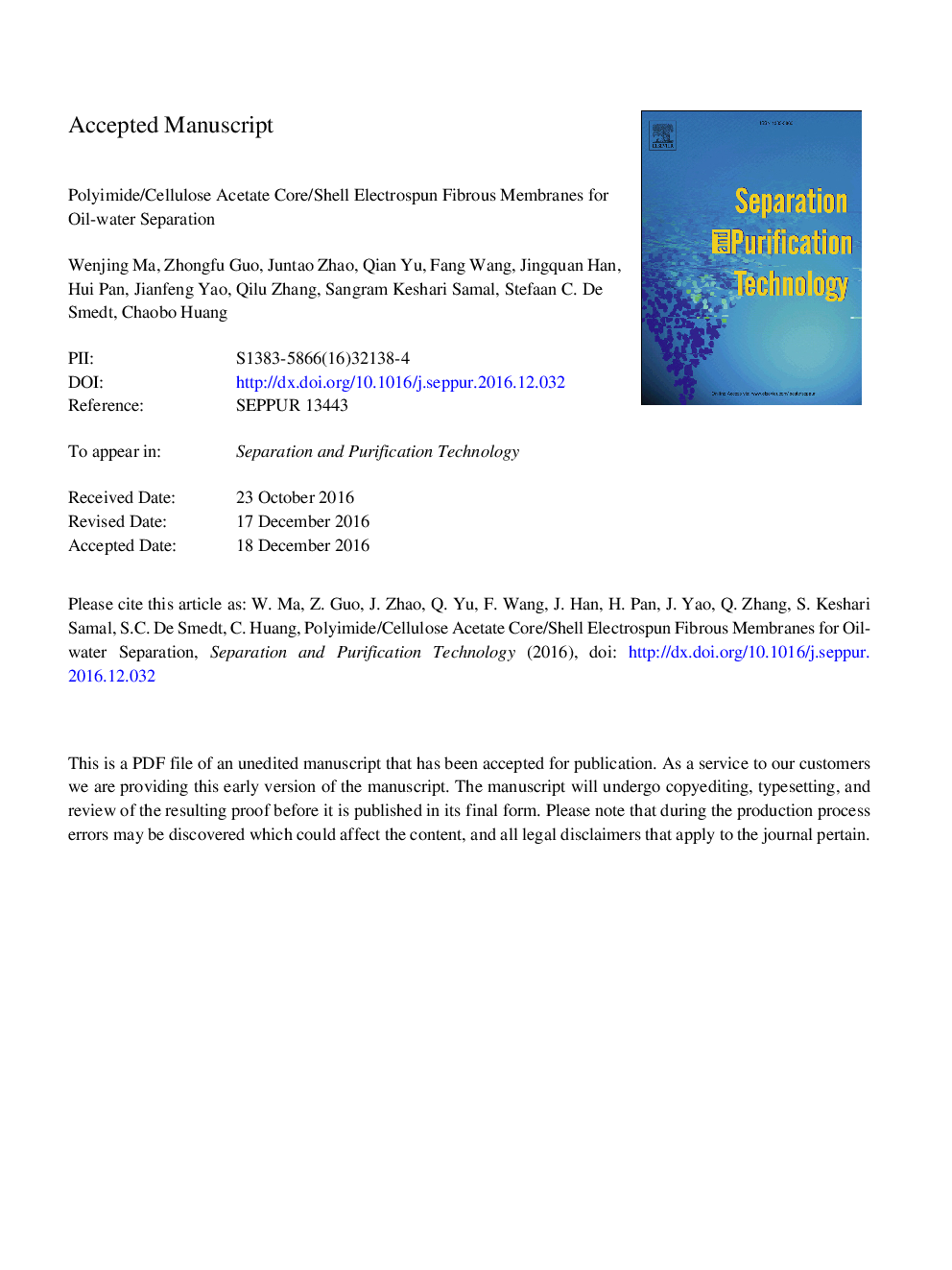| Article ID | Journal | Published Year | Pages | File Type |
|---|---|---|---|---|
| 4990122 | Separation and Purification Technology | 2017 | 39 Pages |
Abstract
In recent years, efficient, cost effective oil-water separation technologies are highly desired due to frequent oil spill accidents. To design fibrous membranes for efficient oil-water separation, 'flexible' polyamide acid (PAA), being polyamide acid with ether linkages in the backbone, and 'heavily' fluorinated polybenzoxazine (F-PB) were synthesized. Cellulose acetate (CA) and PAA were co-axially electrospun; the PAA core was then imidizated at high temperature to obtain core/shell structured CA/polyimide (PI) electrospun fibrous membranes; subsequently the surface of the fibers was modified with F-PB, in the presence or in absence of silica nanoparticles (SNPs). The mechanical strength, surface wettability, chemical and thermal stability, and oil-water separation potential of thus obtained PI/CA fibrous membranes were evaluated. The membranes show a much higher critical tensile stress (130 MPa) and critical tensile strain (52%), when compared with CA fibrous membranes. Due to the use of the 'heavily' fluorinated polybenzoxazine, the membranes are superhydrophobic with a water contact angle of 162° and an oil contact angle which approaches 0°. Interestingly, the newly designed PI/CA/F-PB-1/SNP-4 membranes can effectively separate various oil-water mixtures, solely driven by gravity, with a high flux (3106.2 ± 100 L mâ2 hâ1) and a high separation efficiency (>99%) and thus possess great potential for oil-water separation.
Related Topics
Physical Sciences and Engineering
Chemical Engineering
Filtration and Separation
Authors
Wenjing Ma, Zhongfu Guo, Juntao Zhao, Qian Yu, Fang Wang, Jingquan Han, Hui Pan, Jianfeng Yao, Qilu Zhang, Sangram Keshari Samal, Stefaan C. De Smedt, Chaobo Huang,
